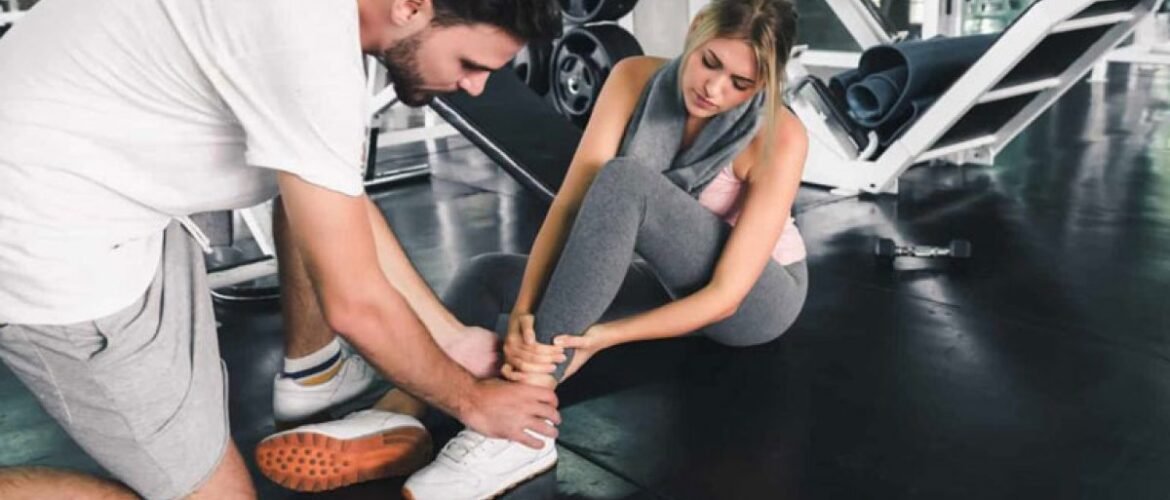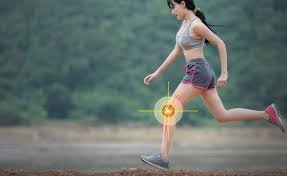COMMON SPORTS & EXERCISE INJURIES

Dr. Meenakshi (P. T.) with a Master’s Degree in Sports Physiotherapy is Gāyo Fitness Academy’s Senior National Faculty and Assessor in Sports Medicine, Sports Medical Rehabilitation and Exercise Therapy.
Her impressive work experience includes working her Asst. Professorship in Department of Physiotherapy, P.D.M University Bahadurgarh (Haryana) and practice as Sports Physiotherapist in Sports Authority of India National Boxing Academy, Rohtak. She has attended to India’s world-class women’s boxing teams. She can be contacted at meenaxidhaka133@gmail.com. Dr Meenakshi will write regularly on exercise and sports injuries management.

Sometimes preventing common sports injuries is beyond our control, but many times sports injuries are preventable. If a sprain or strain is severe, however, the entire muscle, tendon, or ligament is torn away, and surgery may be needed.
Sports injuries occur when engaging in sports or exercise. … Bruises, strains, sprains, tears, and broken bones can result from sports injuries. Soft tissues like muscles, ligaments, tendons, fascia, and bursae may be affected.

The most common sports injuries are –
- Ankle sprain
- Groin pull
- Rotator Cuff injuries
- Hamstring strain
- Shin splints
- Knee injury – Anterior Cruciate Ligament (ACL) tear
- Knee injury – Patellofemoral syndrome: injury resulting from the repetitive movement of the kneecap against the thigh bone
- Tennis elbow (epicondylitis)
We will consider the first three here as I find them to be more common than others.
Generally, the tissue lengthens with stress and returns to its normal length — unless it is pulled too far out of its normal range. Think of ligaments and muscle-tendon units like springs. Strains are injuries to muscle fibers or tendons, which anchor muscles to bones. Strains are called “pulled muscles” for a reason: Over-stretching or overusing a muscle causes tears in the muscle fibers or tendons.
So the common injuries and their management are as mentioned:-
Ankle sprain
Most athletes have experienced a sprained ankle, which typically occurs when the foot turns inward (inversion). This turning stretches or tears the ligaments on the outside of the ankle (laterally), which are relatively weak and thus most common in all sports as it can occur during warm up, running, jumping or exercise, etc.
Prevention and management
With an ankle sprain, it’s important to exercise to prevent loss of flexibility and strength — and re-injury. A high ankle sprain is slower to heal. One way to recognize it is that it usually causes tenderness above the ankle. To rule out any fracture, tests must be conducted according to Ottawa Ankle Rules and if positive the injured person needs to see a doctor.

Management will follow P.R.I.C.E. drill –
- Protect the injured part, not allowing any further damage
- Rest the injured part
- Apply ice or cold treatment for 15-20 minutes (cold spray or direct application of ice, ice massage, cold gel packs, ice immersion, etc)
- Compression: use of mild to moderate pressure to the injured area with bandages / crepe bandages is advisable.
- Elevate the injured part against gravity to help reduce swelling


Current international standards have replaced P.R.I.C.E. with P.O.L.I.C.E.
- P – Protection of injured part
- O/L – Application of Optimal load (local injury factors) / Training load
- C.E. – as mentioned earlier (ice + compression+ elevation)
Exercises to prevent sprains and strengthen muscles around ankle after sprain –
Calf muscle stretch
ROM exercise in pain free range
Standing dorsiflexion
Towel crunches & marble pickup
Isometric exercises (hold and press)– inversion, eversion, dorsiflexion, plantarflexion; we can use manual resistance or with help of rubber bands
PNF exercises active and progress to resistive
Strengthening exercises with the help of bands and tubes
Heel and toe raises first with both feet and single leg (the injured one)
Balance exercises (star excursion test, single leg balancing on foam surface and balance board – light intensity functional training)
Agility ladder exercises and many more
Groin Pull
A groin strain is an injury or tear to any of the adductor muscles of the thigh. These are the muscles on the inner side of the thigh.
Sudden movements usually trigger an acute groin strain, such as kicking, twisting to change direction while running, or jumping. Athletes are most at risk for this injury. Groin strains aren’t usually serious, although a severe strain may take a long time to recover from. Returning to full activity too quickly can aggravate a groin pull or turn it into a long-term problem. Any groin pull that has significant swelling should be seen early by a physician. Hockey, soccer, football, field, hockey, tennis, badminton, heavy weightlifting and cricket are the sports where groin injuries are common.

Symptoms of a groin strain can range from mild to severe, depending on the degree of the injury. They can include:
- pain (usually felt in the inner thigh, but located anywhere from the hip to the knee
- tenderness
- decreased strength in the upper leg
- swelling and bruising
- Difficulty in walking or running without pain,
- snapping sound at the moment of injury.
It’s often caused by straining the adductor muscle while kicking, so it’s more common in the athlete’s dominant leg. Movements that require your muscle to both lengthen and contract at the same time usually cause a groin strain. This puts stress on your muscle and can lead it to overstretch or tear.
Prevention and Management
The best way to prevent groin strain is to avoid using the adductor muscle without proper training and preparation. Especially, if you play a sport that’s likely to cause groin strain, then you must regularly stretch and strengthen your adductor muscles. Continue training throughout the year if possible. If you take a break from training, work back up gradually to your former level of activity to avoid straining muscles.
Immediately after injury, the goal of treatment for a groin strain is to reduce pain and swelling. The first few days of treatment follow the protocol for any muscle injury – P.R.I.C.E. or P.O.L.I.C.E. –
- Rest
- Ice
- Compression
- Elevation
Non-steroidal anti-inflammatory drugs may be recommended in certain cases. Additional treatment like electrotherapy, ultrasound therapy and manual therapy may be beneficial too.
Recommended exercises
- Adductor stretch, butterfly stretch
- Adductor exercises with pulley & cable
- Hamstring stretch on wall
- Form rolling over front of thigh and inner thigh (in pain free zone)
- Side lying leg lift, cross over
- Pelvic bridging with adductor squeeze
- Straight leg raises
- Resisted hip flexion
- Resisted hip abduction and adduction

Rotator Cuff Injury
Rotator Cuff tears refer to partial or full tears of one or a number of the four muscles that help move the shoulder and keep the end of the long bone of the arm within the shallow socket of the shoulder.
Tendinopathy (without complete tear) of the rotator cuff is the most common cause of shoulder pain. The most commonly torn muscle of the rotator cuff is the supraspinatus. Rotator cuff injuries may happen with repetitive overhead use of the arm, but can also occur after suffering trauma, such as after falling on an outstretched hand.
Rotator cuff tears are often a result of chronic impingement of the rotator cuff muscles, which may lead to inflammation and tearing. These injuries can also be a result of a sudden tearing of the tendon near its attachment to the bone.

Symptoms include –
- Patients with chronic injury of the rotator cuff will often have pain that develops over time
- Pain at rest or at night
- Location of the pain is often variable but may also radiate to the elbow
- Pain is generally worse with reaching motions, especially overhead
Careful history and physical exam should be performed. The latter will often include special tests to determine the muscle or structure involved. MRI or ultrasound may also be needed.
Prevention and Management
The most important prevention is proper strengthening and conditioning of rotator cuff muscles. Strongly advised is a thorough warm up before workout and training.
Rest with appropriate movement and ice is necessary, Medications may be needed as prescribed by the doctor.
Exercises include –
- Pendulums with weight
- Isometric internal rotation and external rotation
- Internal rotation and external rotation with weight or with bands and tubes
- Is, Ts, Ys and Ws: e.g. for ‘Is’ lie on stomach, put your arms straight in front of you and thumbs up and just lift your arms just little bit off the ground
- Rowing with help of resisted band
- Bear hugs with help of bands
- Serratus punches bands
- Biceps curls
